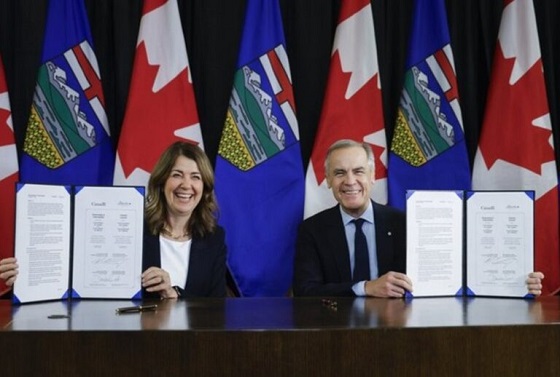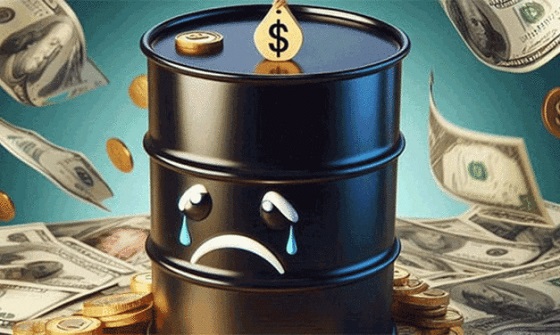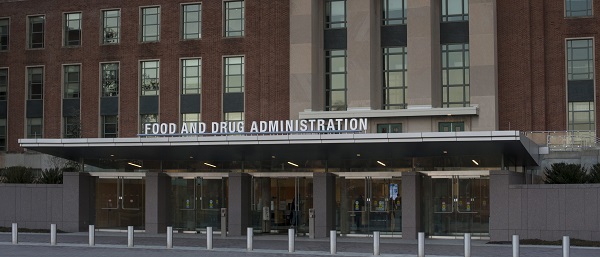Business
Do Minimum Wage Laws Accomplish Anything?

David Clinton
All the smart people tell us that, one way or another, increasing the minimum wage will change society. Proponents claim raising pay at the low end of the economy will help low-income working families survive in hyper-expensive communities. Opponents claim that artificially increasing employment costs will either drive employers towards adopting innovative automation integrations or to shut down their businesses altogether. Either way, goes the anti-intervention narrative, there will be fewer jobs available.
Well, what’ll it be? Canadian provinces have been experimenting with minimum wage laws for many years. And since 2021, the federal government has imposed its own rate for employees of all federally regulated industries. There should be plenty of good data out there by now indicating who was right.
The Audit is a reader-supported publication. To receive new posts and support my work, consider becoming a free or paid subscriber.
Historical records on provincial rates going back decades is available from Statistics Canada. For this research, I used data starting in 2011. Since new rates often come into effect mid-year, I only applied a year’s latest rate to the start of the following year. 2022 itself, for simplicity, was measured by the new federal rate, with the exception of British Columbia who’s rate was $0.10 higher than the federal rate.
My goal was to look for evidence that increasing statutory wage rates impacted these areas:
- Earnings among workers in full-service restaurants
- Operating profit margins for full-service restaurants
- Total numbers of active businesses in the accommodation and food services industries
I chose to focus on the food service industry because it’s particularly dependent on low-wage workers and particularly sensitive to labour costs. Outcomes here should tell us a lot about the impact such government policies are having.
Restaurant worker income is reported as total numbers. In other words, we can see how much all of, say, Manitoba’s workers combined took home in a given year. For those numbers to make sense, I adjusted them using overall provincial populations.
Income in British Columbia and PEI showed a strong correlation to increasing minimum wages. Interestingly, BC has consistently had the highest of all provinces’ minimum wage while PEI’s has mostly hung around the middle of the pack. Besides a weak negative correlation in Saskatchewan, there was no indication that income in other provinces either dropped or grew in sync with increases to the minimum wage.
Nation-wide, by weighting results by population numbers, we got a Pearson coefficient 0.30. That means it’s unlikely that wage rate changes had any impact on take-home income.
Did increases harm restaurants? It doesn’t look like it. I used data measuring active employer businesses in the accommodation and food services industries. No provinces showed any impact on business startups and exits that could be connected to minimum wage laws. Overall, Canada’s coefficient value was 0.29 – again a very weak positive relationship.
So restaurants haven’t been collapsing at epic, extinction-level rates. But do government minimums cause a reduction in their operating profit margins? Apparently not. If anything, they’ve become more profitable!
The nation-wide coefficient between minimum wages and restaurant profitability was 0.88 – suggesting a strong correlation. But how could that be happening? Don’t labour costs make up a major chunk of food service operating expenses? Here are a few possible explanations:
- Perhaps many restaurants respond to rising costs by increasing their menu prices. This can work out well if market demand turns out to be relatively inelastic and people continue eating out despite higher prices.
- Higher wages might lead to lower employee turnover, reducing hiring and training costs.
- A higher minimum wage boosts worker incomes, leading to more disposable income in the economy. Although the flip-side is that we can’t see strong evidence of higher worker income.
- Higher wages can force unprofitable, inefficient restaurants to close, leaving stronger businesses with higher market share.
In any case, my big-picture verdict on government intervention into private sector wage rates is: thanks but don’t bother. All that effort doesn’t seem to have improved actual incomes on a population scale. At the same time, it also hasn’t driven industries with workers at the low-end of the pay scale to devastating collapse.
But I’m sure it has taken up enormous amounts of public service time and resources that could undoubtedly have been more gainfully spent elsewhere. More important, as the economist Alex Tabarrok recently pointed out, minimum wage laws have been shown to reduce employment for the disabled and measurably increase both consumer prices and workplace injuries.
Business
Some Of The Wackiest Things Featured In Rand Paul’s New Report Alleging $1,639,135,969,608 In Gov’t Waste


From the Daily Caller News Foundation
Republican Kentucky Sen. Rand Paul released the latest edition of his annual “Festivus” report Tuesday detailing over $1 trillion in alleged wasteful spending in the U.S. government throughout 2025.
The newly released report found an estimated $1,639,135,969,608 total in government waste over the past year. Paul, a prominent fiscal hawk who serves as the chairman of the Senate Homeland Security and Governmental Affairs Committee, said in a statement that “no matter how much taxpayer money Washington burns through, politicians can’t help but demand more.”
“Fiscal responsibility may not be the most crowded road, but it’s one I’ve walked year after year — and this holiday season will be no different,” Paul continued. “So, before we get to the Feats of Strength, it’s time for my Airing of (Spending) Grievances.”
Dear Readers:
As a nonprofit, we are dependent on the generosity of our readers.
Please consider making a small donation of any amount here.
Thank you!
The 2025 “Festivus” report highlighted a spate of instances of wasteful spending from the federal government, including the Department of Health and Human Services (HHS) spent $1.5 million on an “innovative multilevel strategy” to reduce drug use in “Latinx” communities through celebrity influencer campaigns, and also dished out $1.9 million on a “hybrid mobile phone family intervention” aiming to reduce childhood obesity among Latino families living in Los Angeles County.
The report also mentions that HHS spent more than $40 million on influencers to promote getting vaccinated against COVID-19 for racial and ethnic minority groups.
The State Department doled out $244,252 to Stand for Peace in Islamabad to produce a television cartoon series that teaches children in Pakistan how to combat climate change and also spent $1.5 million to promote American films, television shows and video games abroad, according to the report.
The Department of Veterans Affairs (VA) spent more than $1,079,360 teaching teenage ferrets to binge drink alcohol this year, according to Paul’s report.
The report found that the National Science Foundation (NSF) shelled out $497,200 on a “Video Game Challenge” for kids. The NSF and other federal agencies also paid $14,643,280 to make monkeys play a video game in the style of the “Price Is Right,” the report states.
Paul’s 2024 “Festivus” report similarly featured several instances of wasteful federal government spending, such as a Las Vegas pickleball complex and a cabaret show on ice.
The Trump administration has been attempting to uproot wasteful government spending and reduce the federal workforce this year. The administration’s cuts have shrunk the federal workforce to the smallest level in more than a decade, according to recent economic data.
Festivus is a humorous holiday observed annually on Dec. 23, dating back to a popular 1997 episode of the sitcom “Seinfeld.” Observance of the holiday notably includes an “airing of grievances,” per the “Seinfeld” episode of its origin.
Alberta
A Christmas wish list for health-care reform

From the Fraser Institute
By Nadeem Esmail and Mackenzie Moir
It’s an exciting time in Canadian health-care policy. But even the slew of new reforms in Alberta only go part of the way to using all the policy tools employed by high performing universal health-care systems.
For 2026, for the sake of Canadian patients, let’s hope Alberta stays the path on changes to how hospitals are paid and allowing some private purchases of health care, and that other provinces start to catch up.
While Alberta’s new reforms were welcome news this year, it’s clear Canada’s health-care system continued to struggle. Canadians were reminded by our annual comparison of health care systems that they pay for one of the developed world’s most expensive universal health-care systems, yet have some of the fewest physicians and hospital beds, while waiting in some of the longest queues.
And speaking of queues, wait times across Canada for non-emergency care reached the second-highest level ever measured at 28.6 weeks from general practitioner referral to actual treatment. That’s more than triple the wait of the early 1990s despite decades of government promises and spending commitments. Other work found that at least 23,746 patients died while waiting for care, and nearly 1.3 million Canadians left our overcrowded emergency rooms without being treated.
At least one province has shown a genuine willingness to do something about these problems.
The Smith government in Alberta announced early in the year that it would move towards paying hospitals per-patient treated as opposed to a fixed annual budget, a policy approach that Quebec has been working on for years. Albertans will also soon be able purchase, at least in a limited way, some diagnostic and surgical services for themselves, which is again already possible in Quebec. Alberta has also gone a step further by allowing physicians to work in both public and private settings.
While controversial in Canada, these approaches simply mirror what is being done in all of the developed world’s top-performing universal health-care systems. Australia, the Netherlands, Germany and Switzerland all pay their hospitals per patient treated, and allow patients the opportunity to purchase care privately if they wish. They all also have better and faster universally accessible health care than Canada’s provinces provide, while spending a little more (Switzerland) or less (Australia, Germany, the Netherlands) than we do.
While these reforms are clearly a step in the right direction, there’s more to be done.
Even if we include Alberta’s reforms, these countries still do some very important things differently.
Critically, all of these countries expect patients to pay a small amount for their universally accessible services. The reasoning is straightforward: we all spend our own money more carefully than we spend someone else’s, and patients will make more informed decisions about when and where it’s best to access the health-care system when they have to pay a little out of pocket.
The evidence around this policy is clear—with appropriate safeguards to protect the very ill and exemptions for lower-income and other vulnerable populations, the demand for outpatient healthcare services falls, reducing delays and freeing up resources for others.
Charging patients even small amounts for care would of course violate the Canada Health Act, but it would also emulate the approach of 100 per cent of the developed world’s top-performing health-care systems. In this case, violating outdated federal policy means better universal health care for Canadians.
These top-performing countries also see the private sector and innovative entrepreneurs as partners in delivering universal health care. A relationship that is far different from the limited individual contracts some provinces have with private clinics and surgical centres to provide care in Canada. In these other countries, even full-service hospitals are operated by private providers. Importantly, partnering with innovative private providers, even hospitals, to deliver universal health care does not violate the Canada Health Act.
So, while Alberta has made strides this past year moving towards the well-established higher performance policy approach followed elsewhere, the Smith government remains at least a couple steps short of truly adopting a more Australian or European approach for health care. And other provinces have yet to even get to where Alberta will soon be.
Let’s hope in 2026 that Alberta keeps moving towards a truly world class universal health-care experience for patients, and that the other provinces catch up.
-

 Energy2 days ago
Energy2 days agoWestern Canada’s supply chain for Santa Claus
-

 Alberta2 days ago
Alberta2 days agoOttawa-Alberta agreement may produce oligopoly in the oilsands
-

 Energy2 days ago
Energy2 days agoThe Top News Stories That Shaped Canadian Energy in 2025 and Will Continue to Shape Canadian Energy in 2026
-

 International2 days ago
International2 days ago$2.6 million raised for man who wrestled shotgun from Bondi Beach terrorist
-

 armed forces22 hours ago
armed forces22 hours agoRemembering Afghanistan and the sacrifices of our military families
-

 Opinion22 hours ago
Opinion22 hours agoPope Leo XIV’s Christmas night homily
-

 Fraser Institute22 hours ago
Fraser Institute22 hours agoHow to talk about housing at the holiday dinner table
-

 Frontier Centre for Public Policy21 hours ago
Frontier Centre for Public Policy21 hours agoTent Cities Were Rare Five Years Ago. Now They’re Everywhere











